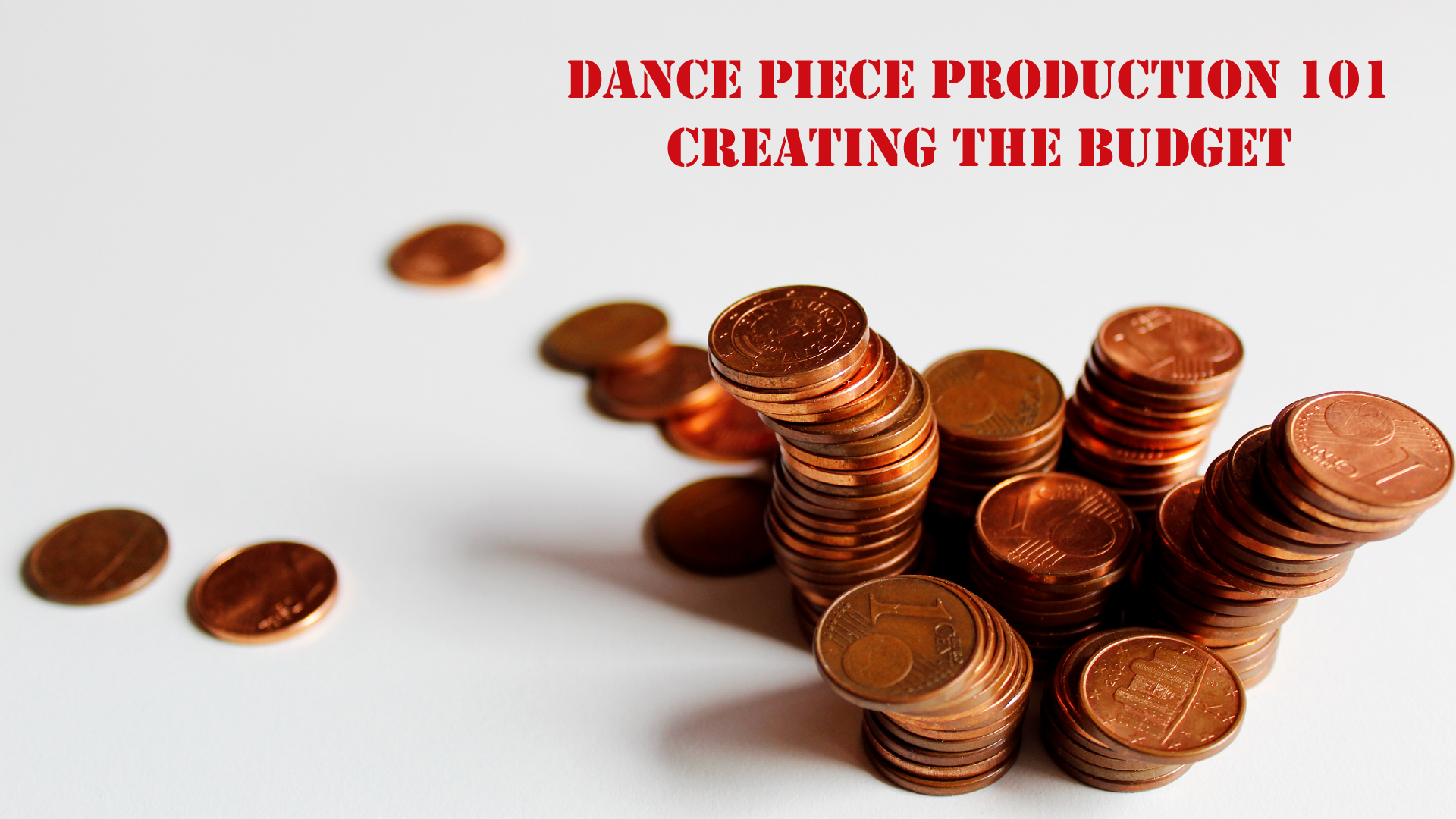One of the first questions that pop up from people interested in doing something on their own is: “how much does it cost to make a piece”? This depends on your goals, and therefore I can not answer it. But I can show you how to answer it yourself.
Dance piece budget calculation
First: You don’t need any money at all to create a dance piece. When you work with friends or your crew, in your spare time, have a composer/producer as part of your team and have a venue where you can play the piece for free, you can do it without investing a cent. This possibility is one you should consider if it is about creating your first piece because it takes away a lot of work and pressure.
When you are creating a big production, work with casted dancers, use mainstream music, costumes, and a state of the art set, you will need to budget all these positions and see the end-result on paper (or your screen).
Creating a dance piece budget is not that hard, but it is time-consuming and a matter of thinking about all details (very similar to calculating your real expenses). I usually start with an excel sheet template to get a rough overview. You can download my template here. It helps me to get an idea about what I will need. There are numbers in there to show how it works, but you need to replace them with your costs. If you don’t have an excel license, you can open the file in Google Docs or Open Office. Both of them are free to use. As soon as you found your workflow, I recommend you create your own template that you tailor to your needs.
The big boys in most dance production budgets
The biggest part of the budget are the people you work with. You want to pay them a fair price. A fair price differs from country to country and is also a matter of the situation of the people. For Austria, there is a recommendation of the IG Freie Theater to pay professional freelancers who work in your production EUR 3.000 per month. This amount is considered a fair price for a month of work with the same volume as a regular full-time job (5 days a week, 40 hours per week). However, it assumes your crew consists of pros who do what they do in your production for a living. On the other hand, paying that is the same as putting your team on minimum wage.
The second biggest part of the costs is usually housing, food, rehearsal room rent, and travel for your team. If you are lucky enough, this block can be zero if everyone lives in the same town, and you have a room that you can use.
The specific costs of your dance production
Everything else is a matter of preference and if your production needs it. Walkthrough the template step by step and see if the point applies to your creation.
At the end of the calculation, we usually add a safety buffer. It should cover things that came up spontaneously or because we forgot something. I love to use 20%, which is high. Most other producers I know calculate with 5% to 10%.
The income side of your budget
In the second (much shorter) part of the budget, you see your income. In general, it is composed of public funding and ticket sales. But you can put everything in there that you can make money with. Merchandise would be an option, but don’t forget to put the costs you will have to create it in the budget as well. Crowd Funding is an option.
I also add a line “your own money.” This one is visualizing how much money I will need to put in to break even. At the end of the calculation, you want the income to be equal or higher than the costs. The “your own money” line, shows you how far you are away.
A side note: In most cases, when you apply for public funding, your costs and income need to be equal to be eligible for financing. “Your own money” (with a more fancy term, depending on your location) is a way to make this happen.
That is the process. Take the time, break down your project, ask people for what they take for the job you want them to do, and find out what your piece will cost.
Usually, at the end of the calculation, we have a sum that is far beyond what we can easily lift. In that case, or when we get less public funding than needed, we can reduce the budget. Whenever we do that it is important to be transparent about our decisions and who gets paid how much. Communicate this before you agree with people outside your core team to work on a project together. This avoids arguments because everybody who is not cool with how things are set up can say no to the project before it starts.


3 replies on “How much does a great dance piece production cost?”
[…] producer takes care of all the orga work around the piece like the budget & accounting, finding sponsors, getting rehearsal rooms, securing showings, accommodation, food […]
[…] these answers you will be able to find out if you need a big budget, have a restricted timeframe (because if you need to pay people, time is money), need to hire […]
[…] on those decisions, you create a budget and work on funding (if you choose to). You also start to recruit your team. Depending on […]